By Michelle Franzoni Thorley
From a speech given at the Center for LDS Arts in New York City, 2019. Shared here to publicly add to the conversation about the newly announced requirements for meetinghouse foyer art displays.

To understand my presentation, you need to understand a little about who I am. I am a woman, born to an American mother and a Mexican Father. Being part of two different worlds has given me a unique perspective. Being a Mexican American daughter of a immigrant and single white mother has taught me bravery, resiliency, and is one of the biggest reasons why I have the courage to stand in front of you all today. My mother has taught me I am capable of anything.
I know the value the world places on someone like me. I was not born with many privileges or opportunities. My humble circumstances might have had the power to dictate my worth or what I could become if it were not for one major influence in my life. From a very young age I knew that God loved me, I knew that I was valuable to loving heavenly parents. Maya Angelou expressed these exact sentiments best, as she is uniquely gifted to do” “It still humbles me, that this force, which made leaves and fleas and stars and rivers and you, loves me… It’s amazing! I can do anything, and do it well, any good thing, I can do it. That’s why I am who I am,” she said. “Yes. Because God loves me and I’m amazed at it and grateful for it.”
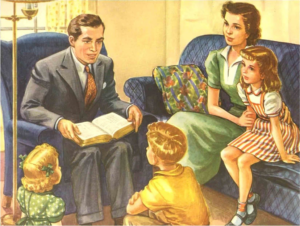
Growing up I would look at Mormon art and feel connected to it as a follower of Jesus Christ, but I never saw myself represented there. While this image is not LDS, it is an excellent representation of the images I am referring to. None of the faces looked like mine. They did not tell stories that were mine. I often wondered to myself, where do I fit in here? As a Mexican American, an only child, and a daughter of a single mother I often felt I belonged nowhere positive. I did not fit into the stereotypes of a “Mormon.” I often wondered would there ever be any art that that would represent my experiences in the church?
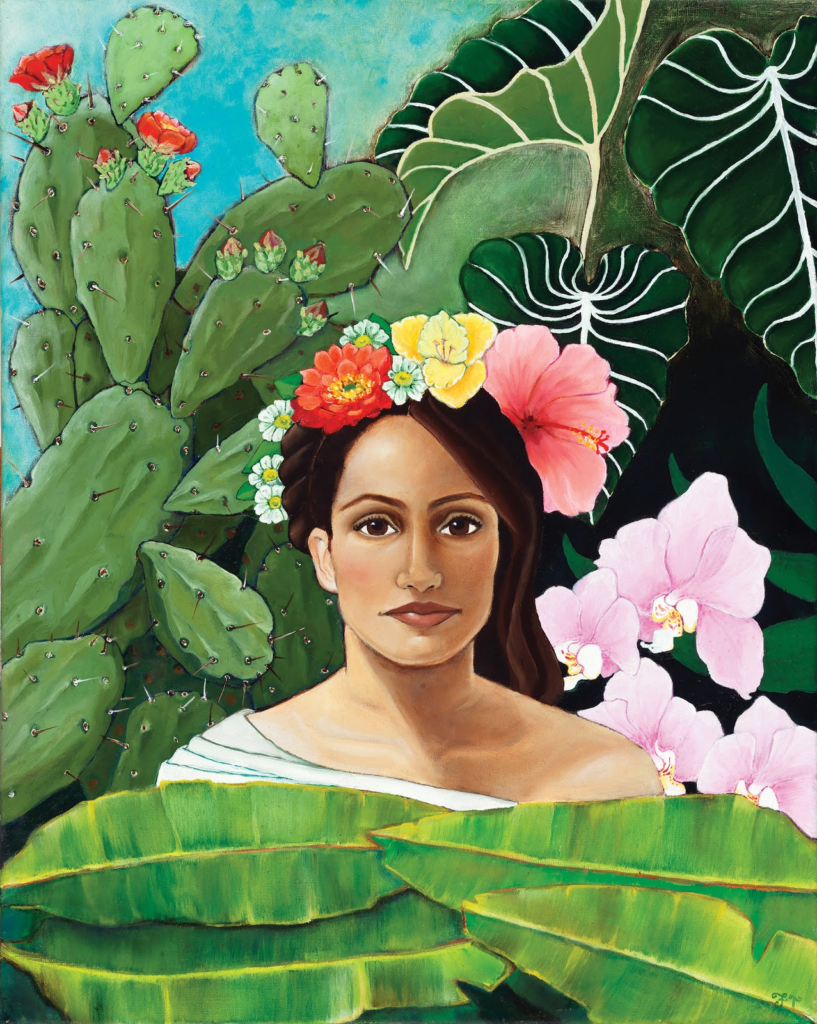
Even though I have little education, I feel called to paint because I love how diverse our Church is and I want everyone to know they fit in and have a place here. I did not see the art I wished to see, so I decided I needed to make it.
Why it’s important that women and people of color create art? First I want to acknowledge that the term “people of color” represents a large diverse group of people. While our experiences differ, we are almost all minorities in our societies and especially in the church.
In a recent TEDtalk, Actress America Ferrera said, “I wanted to play people who were complex and multidimensional, people who existed in the center of their own lives. Not cardboard cutouts that stood in the background of someone else’s life….
I have witnessed the power our voices have when they can access presence in the culture…we cannot deny it — presence creates possibility…”
I share this quote because it really hits home. Why is it important to have a diversity of skin color, gender, ethnicity, and backgrounds in LDS art? First, Let me ask you this, “what is possible for the future of our church? What is divinely designed for the future of our church? It is diversity. But how can we create diversity? We can create diversity By building the possibility for it through art. By anticipating and planning for it. This is Christ’s church; we all need to be represented here because we all belong here.
We are starting to see more representations of people of color painted by white LDS artists. While this movement is wonderful it is only the beginning of inclusion. We have come to a place in history where people of color don’t just want their stories told, we want to tell our own stories, dreams, and perspectives using our own voices. We do not want to be the background “color” in someone else’s painting.
Elder Ulisess Soares said “When we understand people and their circumstances, we tend to act in love, we tend to embrace them according to their needs. This is all about ministering. You minister to people according to the circumstances they are living. And we have to understand their challenges and difficulties. I believe diversity is very important…. we should learn from the different ways people are and the different ways people think.”
We cannot empathize and minister to peoples needs, if we do not understand their circumstances and stories. Throughout history, it has been widely researched and documented that women in general are the most marginalized and often oppressed group in history. This marginalization is magnified even more when you add in race. All women, and especially women of color understand opposition.
We, as minorities, need to be able to process, express, pray and create art that is based and inspired by our own distinctive life experiences. Minority women have unique experiences with oppression. Our histories and experiences, our stories, have been pushed into the shadows through all history. I get both excited and emotional when I think about women working out and sharing difficult life stories through art for the first time.
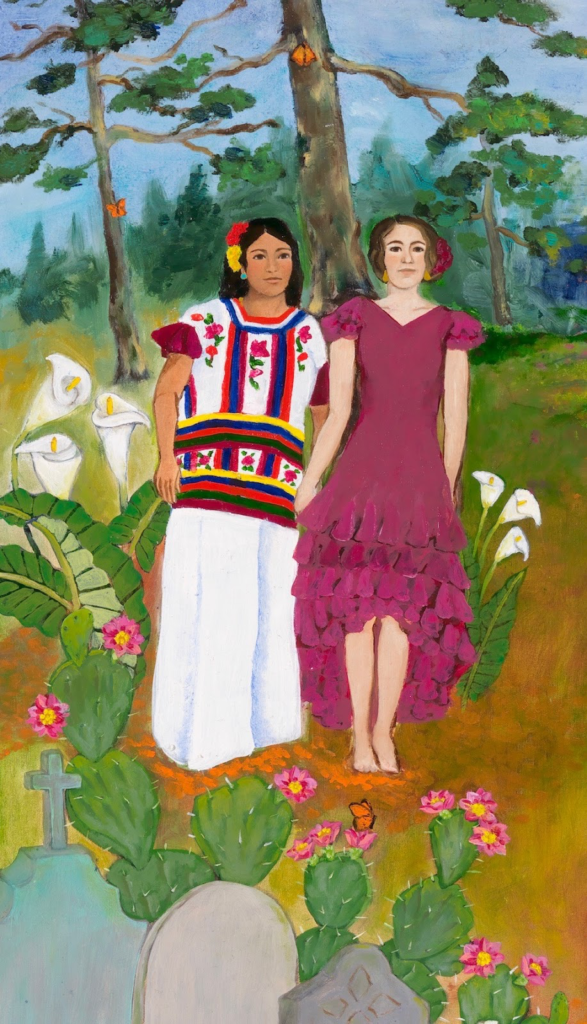
A year ago, while working on my family history, I had a difficult time dealing with the atrocities my European ancestors inflicted on my indigenous ancestors. For many people of color, family history involves oppression, racism, slavery and violence. It is really hard and depressing to confront these things. I was able to sit and paint as I worked out my feelings about this difficult subject.

It began with a lot of anger, then a deep sadness that I felt in my bones. I understood that all this violence, racism and oppression has lived in my family for centuries and that I still felt and saw the effects of it in my life and the lives of family members today.
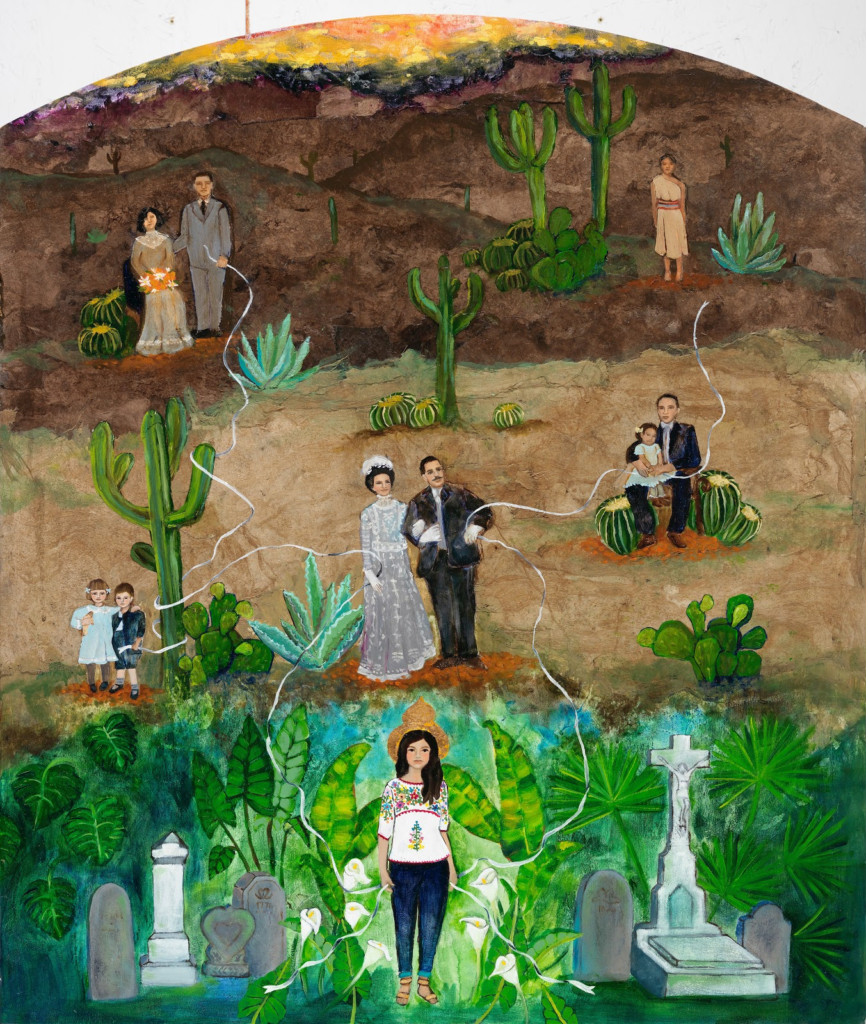
By doing family history and temple work, I was able to work through these difficult emotions and express my feelings of this process through painting and begin the healing process that my ancestors and I have longed for.
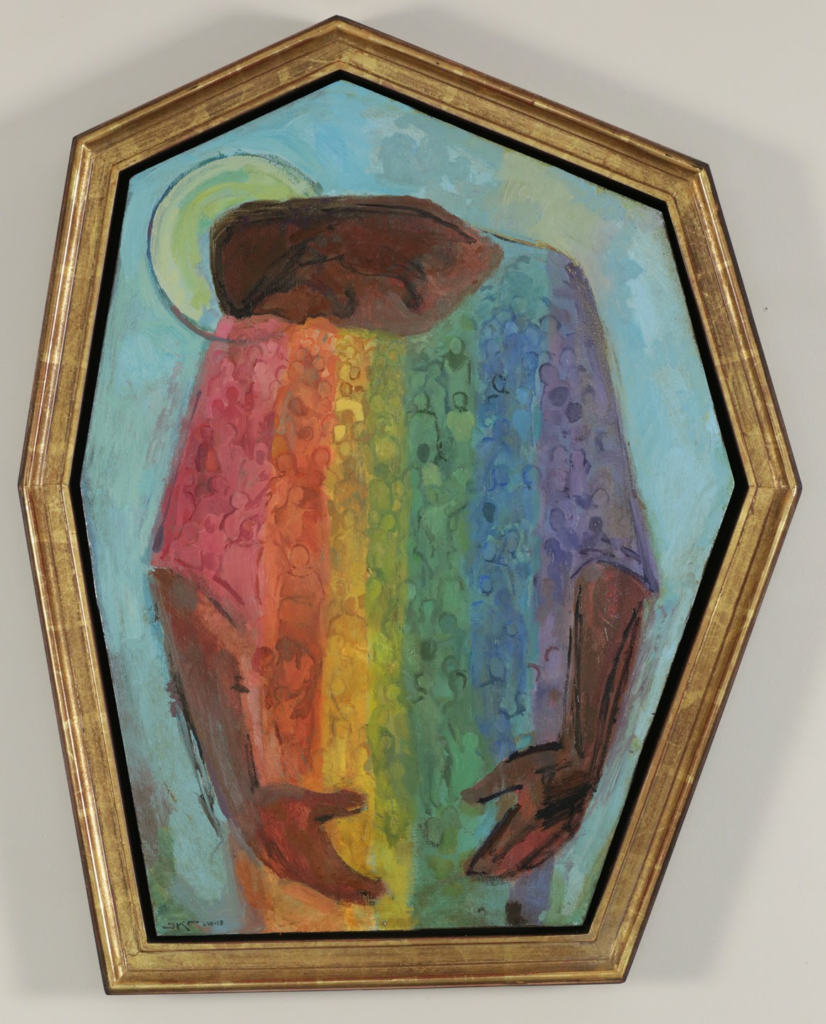
Having our art match the diversity of our membership also helps our community by sending a message of inclusion. This painting is “Jesus said love everyone”, by J. Kirk Richards. Imagine if you were someone who is LGBTQ+, and wondering if you will be safe and welcomed into a Latter day saint church building. How would you feel walking into one of our Church buildings for the first time and seeing an image like this? I would hope it would be a step in the right direction to help “visitors feel welcome” without using words. In preparing for this talk I looked for a painting that would demonstrate a feeling on inclusion for women of color. It was very difficult to find.

This painting “Mourning’s Hosanna” by Rose Datoc Dall, a Filipina American is very uncommon, which is saddening because this is exactly what we need to see more of. Our walls should send the message to each person who enters that they are part of the body of Christ and that they are seen and loved for who they are.
For me, beginning to paint was a daunting task. I had to first believe in myself that I could teach myself how to paint.
I had a pallet knife and two tubes of paint. I was lucky enough to be given some used paint and brushes until slowly I could buy a few of my own supplies. I taught myself how to paint portraits using tutorials on YouTube. It took months and months to understand what I needed to do and get the supplies. I would watch painting tutorial after tutorial, and then at night after I put my kids to bed, I would try to imitate what I had seen. I had to guess on colors and values since I didn’t and still don’t quite understand all of that. I had a lot of discouraging thoughts and feelings and little guidance on how to improve. It seemed impossible but I did not want to give up.
You may wonder why there are not more LDS women of color artists, particularly oil painters. Lack of educational opportunities and money to buy supplies are huge reasons. The cost of the investment in resources is often too high for minority women, who often struggle on the edge of poverty in our society. Food, bills, and medication are always going to come before painting supplies.

This all becomes more daunting when you add in the confines of motherhood. Becoming a mother has been a huge artistic inspiration as well as helping me to become a better version of myself. The connection between mother and child is so inspiring, but I would be untruthful if I didn’t also acknowledge the difficulties it brings. I started painting when I still had 2 preschool age children at home. There was never time to paint unless I stayed up very late at night, painting in terrible lighting. Finding a place to paint was even more difficult with the solvents and chemicals that go with oil painting. And finally, the ultimate difficulty was making the decision to focus my emotional and physical efforts to painting and not focusing 100% of my efforts on my family and all the tasks that mothers are responsible for. It’s not just that my house was messy; it was the difficulty of forcefully making time for my dreams and then dealing with the guilt that came along with my decision.

We need to find more ways for mothers and minority women to share their voices and unique perspectives to enrich our church and to be able to empathize and minister to a variety of people. Social media is powerful because it will be the medium in which many stories and perspective of women and people of color will be heard for the first time in history. Social media is a great way to find mentors and seek out guidance and opportunities. It is also one of the few ways for minority women to find and apply for monetary help, even thought, I know through experience, that there are not many resources out there for people like me. Providing scholarships and grants to help with financial obstacles, will be the first phases for those wanting to help.
The continuing phases will be filling our chapels and church building with a diverse selection of art. A selection diverse enough, to shine a light on the most marginalized people in our society. We need art that represents the difficult circumstances that our sisters in the church face, told by the very sisters that have overcome those circumstances. I want children that look like me or have had experiences like me, to grow up seeing themselves in the art of the church. Media and the arts have been influencing social realities for centuries; let us make art that reflects the future inclusion we want to see. If we make it they will come.
I understand that we all suffer in different ways. I want any women or young girls listening, to know I pray for your successes. You are my sisters. I know that God loves you, He sees you, and we see you. You and I are more than our stereotypes and you and I are strong and capable of any good thing.
Michelle Franzoni Thorley is an artist, a family history expert, and a plant enthusiast. With her piece above, Resurrection Morning, Michelle is the first person of color artist to be featured on the cover of The Dialogue Journal in the Spring 2020 issue as edited by Exponent II. You can follow her extraordinary work about family history, race, generational trauma, and art at @flora_familiar on Instagram.


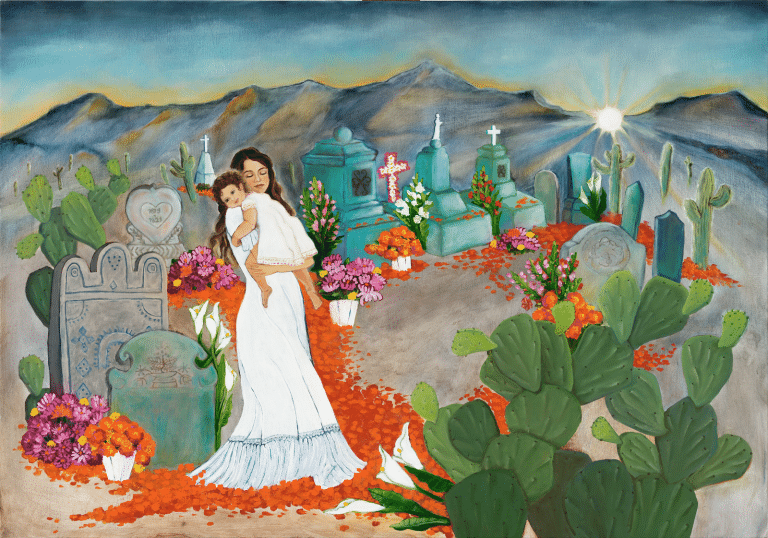
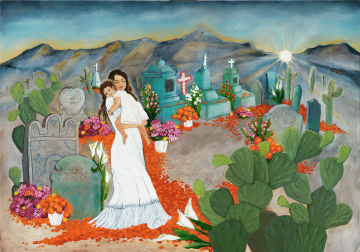
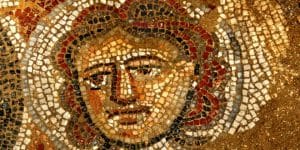
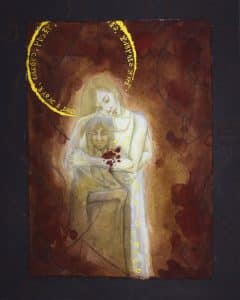
11 Responses
Stunning art. But why is the chosen-for-Mormons “art” so bland and boring? Why are the spaces where Mormons gather so ugly? (Capet on the walls? Really?) Why are contemporary temples a cross between a mortuary and a mid-range motel? Inquiring minds want to know.
Great thoughts. I think the church could do a lot more to help the cause of diversity if they stopped insisting on equating whiteness with purity, goodness, and righteousness. White clothing only in temples sends a white supremacist message to the members. The forced binary of darkness as evil and light as good likewise stigmatizes dark skinned members because dark colors are rich, beautiful, and many people are soothed by the dark and get headaches and sunburns from too much light. It is time to recognize that there is beauty in color and comfort in darkness. Mormonism’s toxic obsession with whiteness and all things white and light has made their people repulsed by anything even slightly dark or colorful, which is ridiculous–it is a false dichotomy.
White is the presence of all color. I don’t see it as a social statement. If it was, and it was understood accurately, it would be seen as inclusive.
I love your reflections and your art! Thanks for sharing both here. I know next to nothing about art or all the startup cost, so it was interesting for me to read about that part. And it’s amazing to me that you’re self-taught! This makes everything doubly awesome! I’m just sorry that it’s still such the norm for art portraying anyone other than white people to be largely ignored in the Church.
Thank you for sharing. This artwork is soul nourishing. The Mother of All Living is powerful and the one of Jesus game me chills. How amazing it would be to see any of this artwork in the hallways at chruch.
I love your art, and this post! It’s just what I’m longing to see in our ward buildings
[…] Speaking at the center’s New York City gallery in 2019, Mexican American painter and illustrator Michelle Franzoni Thorley emphasized the need for additional funding to minority artists, particularly minority women, who are disproportionately affected by poverty. […]
[…] Speaking at the New York City Center Fair in 2019Mexican-American painter and illustrator Michele Franzoni Thurley He stressed the need for additional funding for minority artists, particularly minority women, who are disproportionately affected by poverty. […]
[…] Speaking at the center’s New York City gallery in 2019Mexican American painter and illustrator Michelle Franzoni Thorley emphasized the need for additional funding to minority artists, particularly minority women, who are disproportionately affected by poverty. […]
[…] Speaking at the center’s New York City gallery in 2019Mexican American painter and illustrator Michelle Franzoni Thorley emphasized the need for additional funding to minority artists, particularly minority women, who are disproportionately affected by poverty. […]
Your artwork is beautiful! I love how you’ve used art to connect with your heritage on a deeper level. I agree that we need more art like yours, works by the artists mentioned in your post, and more diverse artwork in general in our church meetinghouses and temples. The Body of Christ is diverse and our church membership is diverse, and our places of worship need to do a better job of emphasizing that.